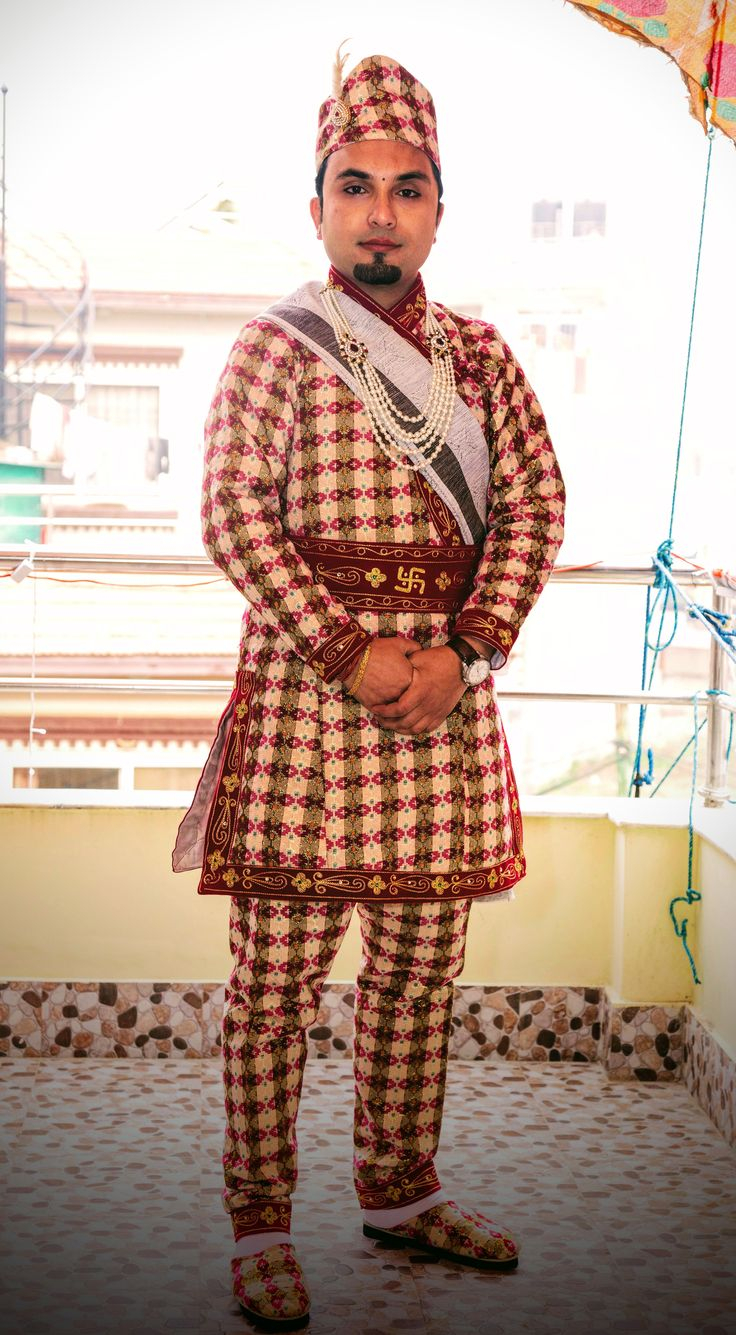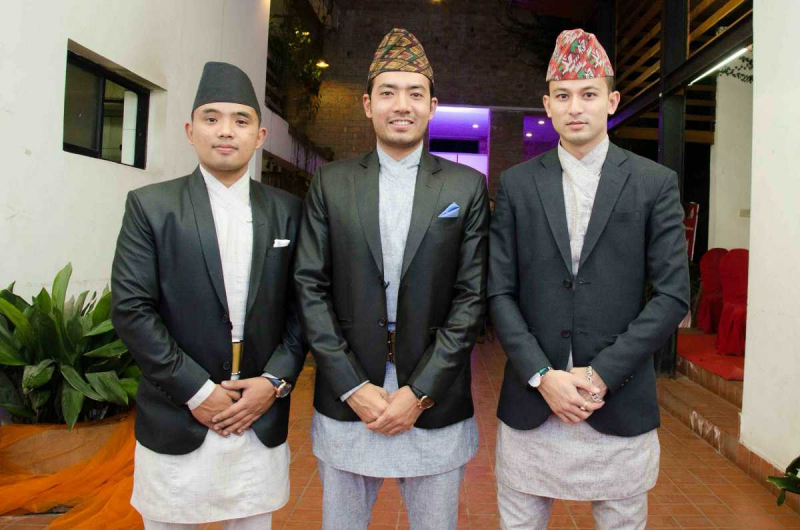Traditional Clothing
The men's traditional clothing is known as "Daura Suruwal" or "Labeda Suruwal." The main components are daura and suruwal; additional pieces include a vest or jacket and a headdress. The informal traditional outfit consists of a daura suruwal and a jacket. It appeared after the Queen of England presented the jacket to the country's Prime Minister. Following him, many men began to add a waistcoat or other European-style coat to their traditional clothing.
Nepali men's national headdress is known as the "Dhaka topi" or "Nepali topi." It is a skullcap, but its shape is unusual. The hat is made of "Dhaka" fabric and pattern. The patterns are similar but not identical - this cap has dozens of different patterns. Dhaka topi rose to prominence in the mid-twentieth century. This folk costume is no longer commonly worn by Nepali men, though it is still used for weddings, ceremonies, folk festivals, and other special occasions. Nepali men also wear a variety of other garments in everyday life and on special occasions. These are the "dhoti," "lungi," and "tapalan."
The Nepalese women's traditional costume is known as "Kurta Suruwal." It's made up of light baggy pants, a blouse, and a big scarf. In modern times, Nepali females frequently wear this outfit. A sari is another traditional Nepali women's dress. It is a must-have for any future bride because saris are commonly used as wedding gowns in this country. Sarees are also worn for important special occasions and ceremonies. The traditional saris of Nepal and India are identical. This fabric is wrapped around the waist and over one shoulder. Sari is typically paired with a lot of jewelry, particularly gold jewels.















